Vegan kalakand using homemade tofu is fudgy, creamy, melt-in-the-mouth and super yum. Even though the recipe doesn’t contain a bit of dairy or dairy products, it’s super palatable. (Scroll down to the bottom to check “How to make Clay Ganesha)
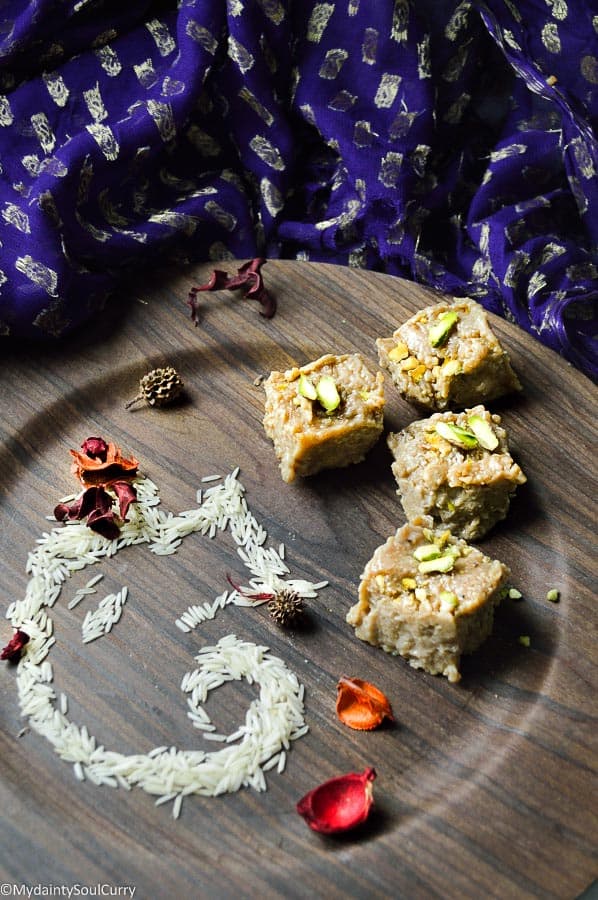
When it comes to Indian sweets and desserts, most of the recipes ask for a profuse use of dairy and dairy products. While 99 percent Indian religious festive feasts are based on vegetarianism, which excludes eggs, there is always a prolific presence of dairy based sweets in the menu. Even though we worship cows, yes we literally do, we ignore the fact that what these animals have to go through in order to provide us milk every single day.

Gone are those days when cows were milked just once or twice a day. The dairy industry, which has substantially grown in the past couple of decades, uses cows just as machines to extract milk. Recently, I saw a video where young and newly born calves are separated from their mothers just after birth so that we humans get our share of plentiful milk. While my heart hurts seeing these videos, I still have to go a long way to become totally dairy-free. (Even though I don't gorge on milk, I still love milk chocolates and ice creams a lot)But, one day I will be there.

In order to replicate many such decadent dairy based Indian sweets, I came up with the idea of giving a vegan makeover to the famous kalakand recipe. Kalakand is basically a milk fudge, which is utterly delicious and very irresistible for my palate. And I must tell you, this vegan version is equally satisfying or even better. At least for me, because each bite doesn’t remind me of the young calves separated from their mommies any more.

This recipe of vegan kalakand using homemade tofu was for Ganesh Chaturthi. But, we Houstonians are badly hit by the hurricane and tropical storm Harvey from late Friday. No electricity, the city is literally under water and what not. Thus, the recipe couldn’t make it to the blog on time. But you can make these yum vegan kalakand using homemade tofu while bidding farewell to lord Ganesha this week. You see, we still have time!
Now the recipe: Vegan kalakand using homemade tofu
Yes, it has silken tofu but you won’t get a hint of that typical no-so-good soy smell. Thanks to cardamom and saffron. I have sweetened it with coconut sugar and some powdered sugar-free. That’s why these kalakand squares have a light brownish hue, which I totally love. But, if the color looks unappetizing to you, for one of those many reasons, then feel free to use some refined sugar or sugar-free in this recipe. I will include substitution options so that you can make a choice while making these vegan kalakand using homemade tofu.
Vegan Kalakand Recipe:
Step-1: Prepare the milk:

- In a heavy bottom non-stick pan, bring 2 cups of almond or any vegan milk to boil.
- Add 1 cup of soy milk powder, and 1 teaspoon of vegan butter or coconut oil.

- Stir occasionally by scraping the bottom to avoid milk scorching.
Step-2: Add tofu:
- Take silken tofu and crumble it.

- We just need 1.5 cups of tofu for this recipe. I used homemade tofu for this recipe. Learn how to make some here.
- Add the tofu and stir well.
- At this point, add 2 tablespoon of blanched almond flour and stir well. Adding almond flour will help to thicken the mixture well. Plus, the released oil from almond flour will help the mixture leaving the pan easily.
Step-3: Add sweeteners:
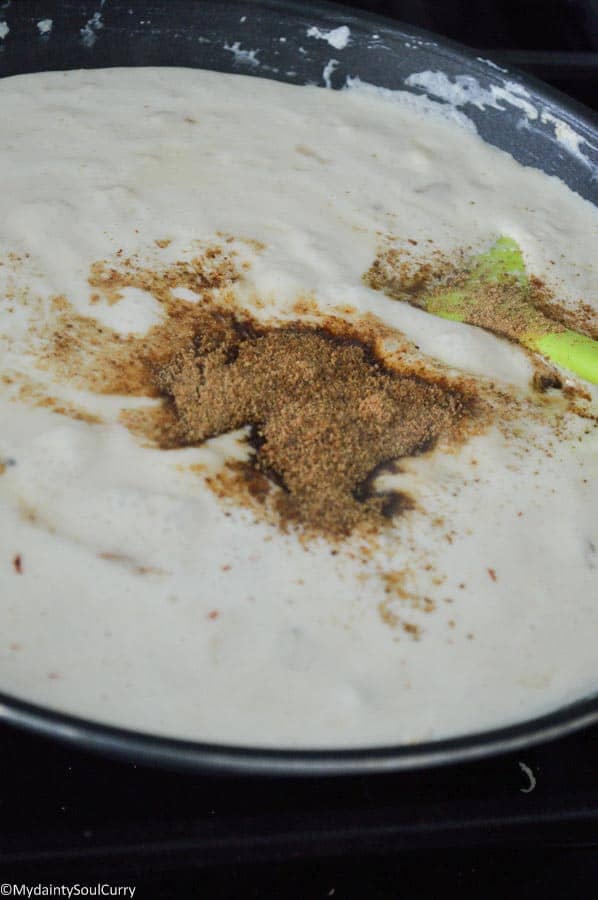
- If adding sugar-free, add ¼ cup of granular sugar-free to this recipe.
- I used ½ cup coconut sugar for a brownish hue, caramel like taste and 2 teaspoon sugar-free sweetener in this recipe.
- If using sugar, add ⅔ cup of sugar.
- Now add ½ teaspoon ground cardamom and a pinch of saffron.
- Stir well.
- Allow the mixture to thicken well. The process will take 20-30 minutes on medium flame.
Step-4:

- Once the mixture is thick, turn off the heat.
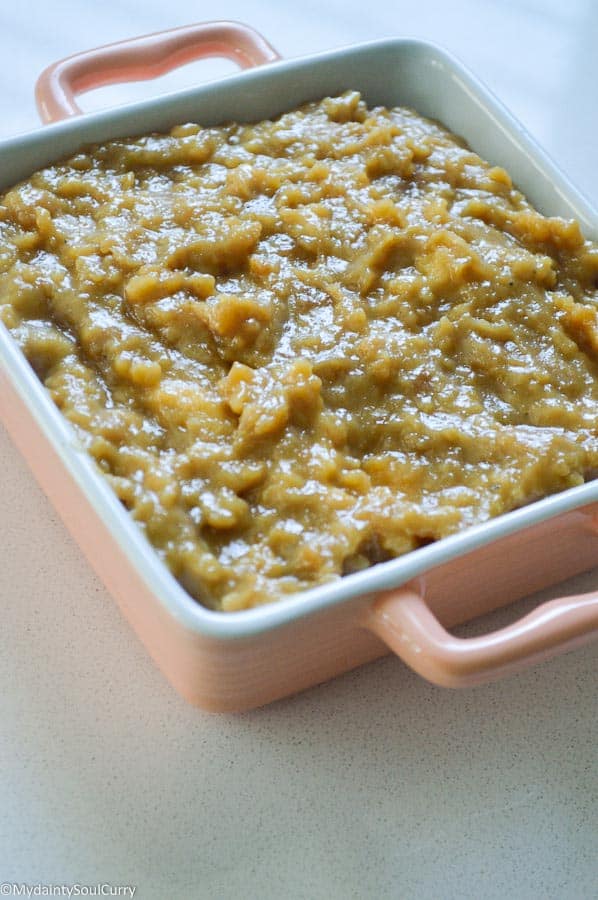
- Transfer the mixture into a greased bowl or container.

- Add chopped pistachios on the top.
- Allow the mixture to cool down completely.
- Now refrigerate the mixture for few hours.
- Cut the fudge using a sharp knife and serve.

NOTE:
- The mixture may feel sticky because of the low-fat content in the milk.
- Feel free to add a few drops of melted vegan butter so that the mixture becomes a lumpy mass and leaves the pan easily.
- If the mixture feels sticky and pasty, you may need to cook it a little further.
- If the mixture feels too dry and stiff, add some warm almond milk and stir well. Cook further until the desirable consistency is achieved.
📖 Recipe

Vegan Kalakand Using Homemade Tofu
Ingredients
- 2 cups almond milk
- 1 cup soy milk or vegan milk powder
- 1 teaspoon vegan butter (melted)
- 1.5 cup silken tofu (crumbled evenly)
- 2 tablespoon almond flour (blanched)
- ½ cup coconut sugar
- 2 tablespoon granular sugar-free
- ½ teaspoon cardamom powder
- A pinch of safforn
- 1 tablespoon chopped pistachio nuts
Instructions
Prepare the milk:
- In a heavy bottom non-stick pan, bring 2 cups of almond or any vegan milk to boil.
- Add 1 cup of soy milk powder, and 1 teaspoon of vegan butter or coconut oil.
- Stir occasionally by scraping the bottom to avoid milk scorching.
Add tofu:
- Take silken tofu and crumble it.
- We just need 1.5 cups of tofu for this recipe.
- Add the tofu and stir well.
- At this point, add 2 tablespoon of blanched almond flour and stir well. Adding almond flour will help to thicken the mixture well. Plus, the released oil from almond flour will help the mixture leaving the pan easily.
Add sweeteners:
- If adding sugar-free, add ¼ cup of granular sugar-free to this recipe.
- I used ½ cup coconut sugar for a brownish hue and 2 teaspoon sugar-free in this recipe.
- If using sugar, add ⅔ cup of sugar.
- Now add ½ teaspoon ground cardamom and a pinch of saffron.
- Stir well.
- Allow the mixture to thicken well. The process will take 20-30 minutes on medium flame.
Cool, cut and serve
- Once the mixture is thick, turn off the heat.
- Transfer the mixture into a greased bowl or container.
- Add chopped pistachios on the top.
- Allow the mixture to cool down completely.
- Now refrigerate the mixture for few hours.
- Cut the fudge using a sharp knife and serve.
Notes
- The mixture may feel sticky because of the low-fat content in the milk.
- Feel free to add a few drops of melted vegan butter so that the mixture becomes a lumpy mass and leaves the pan easily.
- If the mixture feels sticky and pasty, you may need to cook it further.
- If the mixture feels too dry and stiff, add some warm almond milk and stir well. Cook further until the desirable consistency is achieved.
Nutrition
Learn how to make homemade tofu easily at home.
And some tofu recipes that you may love:
Try Amazon Prime 30-Day Free Trial
How to make clay Ganesha?

In this world of eco-friendly campaigns, it’s our duty and responsibility to find the best way to help the environment. Here I am, with my eco-friendly and reusable modeling clay Ganesha made at home and under 30-minutes.
Things you will need:

Modeling clay - white or light brown, black for hair, brown for jewelry and blue for clothes, green for the leaf, glitter
Tools - some paint brushes, clay cutting tool, clay paint - I used acrylic paints
Step-1: Make the leaf:
- Start by making the leaf. Squeeze, flatten and knead the clay and shape into a leaf.
- Use your nail or a clay knife to make veins on the leaf.
Step-2: Make Ganesha head:
- Make Ganesh head by taking a piece of white clay.
- Roll it into a ball and shape a trunk from it.
- Use your fingers to smooth out the clay surface and make the head look smooth.
- Use a plastic spoon to create the eye cavities. Smooth out the surface with your finger.
Step-3: Make Ears:
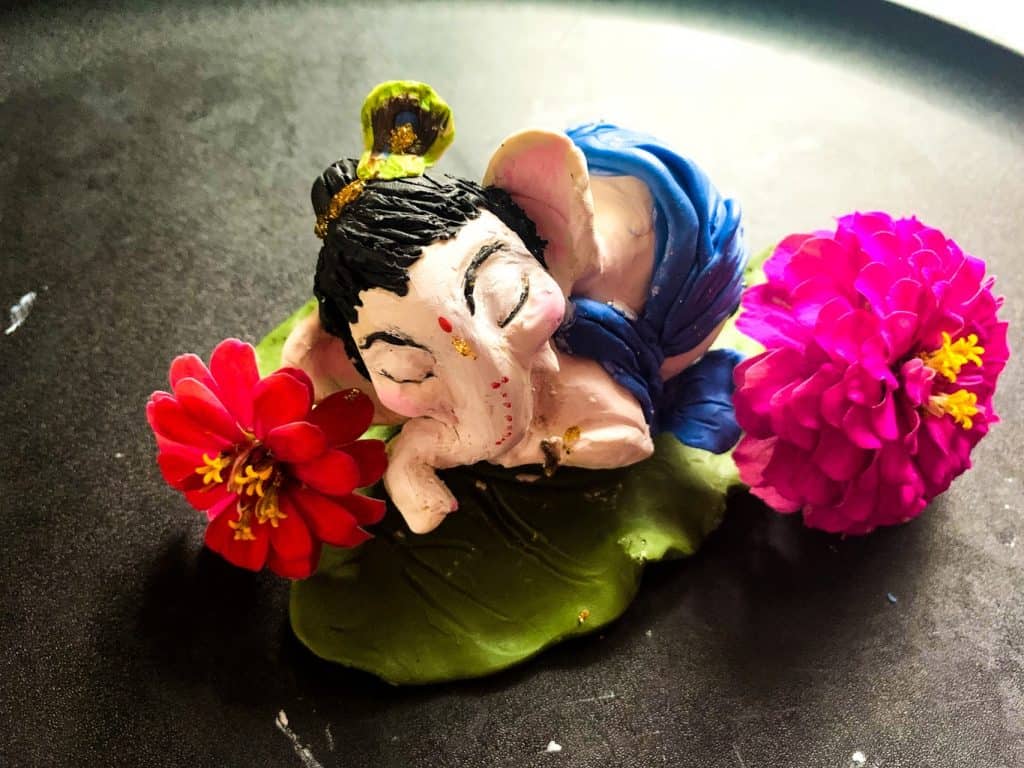
- Yes, now male ears using two small balls of clay.
- Attach the ears to the head and smooth out.
Step-4: Make hands and legs:
- Roll two small pieces of the clay into long cylinder shapes.
- Make hands and legs by shaping through your hand.
Step-5: Make the body:
- Make the body by taking a big ball of the clay.
- Roll out, smoothen and shape into a sleeping baby body.
- Attach legs and hands and the head by using a sharp tooth pick.
Step-6: Make the cloth:
- Use the blue clay to make the cloth and attach it to the body.
- Roll out small cylinder shaped clay doughs and attach it to the cloth.
- Use a sharp tool or toothpick to shape the cloth.
Step-7: Make hair:
- Use the black clay to make the hair and use a sharp tool to shape the hair.
- Attach it to the head and smooth out.
Step-8: Make eyes and brows.
- Similarly, roll out small black clays to make brows and eyes.
- Attach carefully.
Step-9: Make feather:
- Make a peacock feather with green or white clay and color it to look like a peacock feather. Attach it to the head.
Step-9: paint:
- Now paint the Ganesha with white.
- Color pink cheeks and add small vermillion dots on the forehead.
Step-11: Decorate:
- Use glitters and colors to decorate and make your baby Ganesh ready for the Ganesh Chaturthi.
- Hope you enjoy making baby clay Ganesh at home.
- Watch the video below to see the modeling Clay Ganesha making.

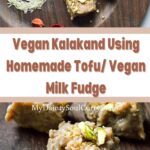





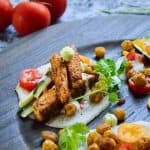
Megha
just awesome... never thought kalakand can be prepared in such a way... very nice... 🙂
Sophie
Thank you Megha!
Shruti
Amazing replica of Kalakand.Never ever thought how things can be replicated keeping in mind the same taste and aroma,i m guessing!!
Sophie
Thank you very much!
Sophie
Thank you Shruti. It's certainly difficult, but doable!
Anna @ shenANNAgans
First of all sending love and thoughts for all your going through with "Harvey", I know just what your going through without electricity after a natural disaster such as we went through earlier this year with Cyclone Debbie. Aaah, all the mopping up... it's such a huge job, I do hope you and yours are not too affected.
Loved this post and your challenges to live dairy free, its certainly inspired you to create something gorgeous.
Take care x
Sophie
Thank you Anna. The whole city suffered a lot. This hurricane left so so many stranded. We are blessed and lucky, and no flooding in my community.
Thank you very much and let's keep Houston in our thoughts and prayers.